2024 Trek Fuel EXe 9.8 GX AXS T-Type E-Bike
| Where To Buy | |||
|---|---|---|---|
Free standard shipping on all bikes (continental U.S. only).
Flat rate shipping to Hawaii and Alaska. |
Free standard shipping on all bikes (continental U.S. only).
Flat rate shipping to Hawaii and Alaska. $9,999.99
|
||
Fuel EXe 9.8 GX AXS T-Type
$9,999.99
|
|||
Fuel EX 9.8 GX AXS T-Type Gen 6
$6,999.99
|
|||
Fuel EXe 9.9 XX AXS T-Type
$14,000.00
|
|||
Fuel EXe 9.9 X0 AXS T-Type
$12,000.00
|
|||
Fuel EX 9.9 XX AXS T-Type Gen 6
$11,000.00
|
|||
Fuel EX 9.9 X0 AXS T-Type Gen 6
$7,999.99
|
|||
Free shipping on orders over $50 (continental U.S. only).
International shipping available. Some exclusions apply. |
|||
Free shipping on orders over $50 (continental U.S. only).
International shipping available. Some exclusions apply. |
|||
Trek's Fuel EXe is part of the SL e-bike club that strives to strike the lowest bottom line when it comes to weight by utilizing a smaller battery and motor. Like Specialized's Levo SL or Orbea's Rise, the Fuel EXe aims to give riders enough juice to get up climbs with moderate input, matched with a riding experience that mirrors a regular mountain bike ride. And it manages to achieve this in a frame design that nearly hides the fact it's an e-bike.
Highlights
- OCLV Carbon frame
- 29-inch wheels
- 140mm of rear wheel travel // 150mm fork travel
- ABP suspension design
- 50 Nm TQ HRP50 Motor
- 360 Wh removable battery (160 Wh range extender available)
- Integrated top tube display
- Wired assist switch
- Mino Link geo adjustment
- 64.8-degree head tube angle
- 76.8-degree effective seat tube angle
- 440mm chainstay length
- 10 carbon builds // 3 aluminum builds
- Sizes: S-XL
- Verified weight (size X-Large, no pedals): 43.12 lbs (19.5 kg)
- MSRP: $13,999 USD as tested ($9,999 USD as tested, 9.8 GX AXS Build)

The Fuel EXe is designed off of Trek's Fuel EX, their ride-everything trail bike. The EXe shares many aesthetic and design similarities with the non-assisted Fuel and features only slightly more reserved geometry. The head angle is a tad steeper, sitting at 64.8 degrees; the chainstay is 5mm shorter, coming in at 440mm, and reach numbers are spacious. Both bikes also feature a Mino Link geo adjustment in the seat stay that adjusts the bottom bracket and head tube angle, but the EXe lacks the leverage rate adjustment found on the regular Fuel. We only rode the bike in the stock, 'Low' position.



Travel amounts are the same between both bikes, with 140mm of rear wheel travel and a 150mm fork. Of course, Trek's now iconic Active Braking Pivot suspension design is employed to separate braking and suspension forces.

At the heart of the Fuel EXe is TQ's HRP50 motor. Definitely a less prominent e-system in the SL space, it provides 50 Nm of torque with 300 watts of power. A silent operator that takes up minimal space and only weighs 4 pounds (1.8 kg), it's combined with a sleek 360 watt hour battery. This ties the Fuel EXe for last place when it comes to motor torque with Specialized's Levo SL and second to last place in battery size just ahead of the Levo SL's 320 watt hour battery. However, unlike the Levo SL, the battery is removable without dropping the motor. All you have to do is remove two screws and slide the battery out an opening in the bottom of the downtime. So, like Transition's Relay, you could remove the battery and ride the Fuel EXe as a regular mountain.

The TQ system features one of the cleanest integrated top tube displays that offers four preset screens to display assist level, range, speed, rider and motor watts, and battery level in a percent. The display is bigger than Specialized's TCU display, and toggling between screens is done with the button on the display. A wired assist remote neatly tucks between other controls, and Trek's app gives you access to individual mode tuning, the ability to log rides, and recommended suspension settings based on your build.

Trek offers a ton of builds in both aluminum and carbon, ranging from $5,500 to $14,000. Sizes range from small to X-large, and all builds come with the same motor, battery, and 29-inch wheels. We tested the 9.8 GX AXS build that retails for $10,000, and our size X-large test bike weighed 43.12 pounds (19.5 kg). This made the Fuel EXe the third-lightest and second-most expensive bike. Build highlights include a RockShox Lyrik Select+ fork with a Super Deluxe Select+ shock, SRAM Code Bronze brakes, SRAM GX Transmission drivetrain, Bontrager Line Elite 30 carbon wheels, and a Bontrager one-piece carbon handlebar.
With a broader range of abilities than some of the other bikes in the test, the Fuel EXe stood out as the go-to SL trail bike when we set out on day one. However, upon learning that it wasn't the lightest (it was 1.5 lbs heavier than the Levo SL), we took another look at where and how the Fuel EXe fits into the SL equation.
Meet the Testers

|
Jason's Impressions
Strengths |
Weaknesses |
|
|
What's the Bottom Line?
Compared to other small motor and battery bikes in the test, the Fuel EXe had the most reserved geometry, resulting in a well-rounded bike. The seated pedaling position was more forward, and the rear suspension was incredibly supple compared to rocks and roots. This made the Fuel EXe ideal for undulating trails as it carried speed well and was easy to sit and spin on. It did ride lighter than the scale showed, and I didn't have any issues tossing the bike around. The rear suspension was incredibly smooth descending, but it still rode like a 140mm travel bike with a lower stack height through demanding sections. Such moments required a more thoughtful and cautious approach to not override the Fuel EXe. Down faster, low angle trails with tight corners or natural rollers, the bike really came to life, offering a precise, calm ride quality that was a blast.
I love the aesthetics of the Fuel EXe. Its slim front triangle and neatly integrated motor successfully hide the fact that it's an e-bike. The stealthy display was also my favorite due to its out-of-site location and useful data screens that offer everything you'd want to know during a ride.
With how similar the Fuel EXe performs to a regular trail bike, it's the perfect bike for big adventure rides. The TQ motor isn't the most powerful, but its smooth delivery truly fades into the background, allowing you to conserve energy, ride further, and receive a fairly untainted e-pedaling experience. Because its battery isn't huge, riding with less assistance is necessary to achieve a decent ride length. For this reason, I wouldn't get the Fuel EXe as my post-work bike to knock out a few quick laps. It wants to get out and take you places and spreads its abilities evenly across descending and climbing performance so that every moment of a ride is maximized.
Jonny's Impressions
Strengths |
Weaknesses |
|
|
What's The Bottom Line?
The hype around the Fuel EXe when it first launched had me excited to throw a leg over it. Hardly showing any signs of having a battery and motor on board, I anticipated this to be the most natural feeling bike in the test. It ended up third lightest by a little over two pounds, but it carries the weight well. This was the only bike that fully died during my time aboard it and pedaling with the motor off felt just like pedaling a bike in second gear instead of first. Power delivery from the Tq motor was so subtle I hardly realized it was assisting until the torque became more apparent up steeper pitches. The assist levels get up to speed with a bit more pedal input required, but also allow for going past the top end of power with little to no drag. Trek has done a great job of creating the most natural pealing bike possible, and allow for pedaling past what the motor can provide without hitting a wall of drag.
Lear's Impressions
Strengths |
Weaknesses |
|
|
What's The Bottom Line?
Trek definitely took the angle of trying to mirror the experience of a classic mountain bike ride with the benefit of some assistance climbing with creating the Fuel EXe. It rode light, was very efficient and fast pedaling, and the rear suspension was smooth and planted. It was the least gravity-orientated bike in the test, highlighted by a lack of confidence in rough sections. The low stack and low-rise one-piece handlebar didn't help the situation either. Still, I enjoyed how quick and light the Fuel EXe rode on smoother trails, and the rear suspension offered the best traction and control of all the bikes in the test.
The TQ motor was impressively silent and had the most natural assistance. It was also one of the least powerful motors, but I appreciated how it quietly delivered power at a rate that matched my effort, and there were no harsh startups or shutoffs in power. Battery life wasn't as good as the bikes with Fazua's system, so riding in lower assist modes would be needed to receive proper range. The entire e-system was also beautifully designed into the EXe's frame. Everything felt very refined, from the sleek battery and motor integration to the clear display and tucked-up charging port.
Overall, the Fuel EXe would be best for riders who want a well-rounded e-bike and are cool with giving up some motor power and range to save a few pounds.
A big shout out to Tannus, Feedback Sports and Maxxis for supporting Test Sessions!
View key specs, compare e-bikes, and rate the Trek Fuel EXe in the Vital MTB Product Guide.
Specifications
Optional 160 Wh range extender battery fits into included standard water bottle cage with built-in retention strap
Display screens: battery/ride time, range/ride time, speed/average speed, rider power/motor power
Remote: TQ 2-button
Virtual Length: 35mm (SM), 45mm (MD-XL)
Drop: 100mm (SM), 150mm (MD), 170mm (LG), 200mm (XL)
• Geometry adjustable via Mino Link flip chip in rear rocker link pivot
• Compatible with mixed ("Mullet") wheel setups (29" front, 27.5" rear) with Mino Link flip chip in High position
• Internal cable routing with integrated channels
• SRAM UDH (Universal Derailleur Hanger)
• Trek Central mobile app provides motor assist tuning, range monitoring and calculation, navigation and tracking, suspension and tire pressure recommendations, pressure monitoring with AirWiz and TireWiz sensors, and integrates with third-party apps
• Weight given for size MD set up tubeless
• Includes TQ 4A battery charger
• Includes SRAM AXS Powerpack battery charger
• Includes Bontrager TLR tubeless tire sealant, rim strips, and valves
| Where To Buy | |||
|---|---|---|---|
Free standard shipping on all bikes (continental U.S. only).
Flat rate shipping to Hawaii and Alaska. |
Free standard shipping on all bikes (continental U.S. only).
Flat rate shipping to Hawaii and Alaska. $9,999.99
|
||
Fuel EXe 9.8 GX AXS T-Type
$9,999.99
|
|||
Fuel EX 9.8 GX AXS T-Type Gen 6
$6,999.99
|
|||
Fuel EXe 9.9 XX AXS T-Type
$14,000.00
|
|||
Fuel EXe 9.9 X0 AXS T-Type
$12,000.00
|
|||
Fuel EX 9.9 XX AXS T-Type Gen 6
$11,000.00
|
|||
Fuel EX 9.9 X0 AXS T-Type Gen 6
$7,999.99
|
|||
Free shipping on orders over $50 (continental U.S. only).
International shipping available. Some exclusions apply. |
|||
Free shipping on orders over $50 (continental U.S. only).
International shipping available. Some exclusions apply. |
|||































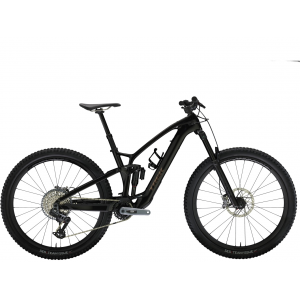
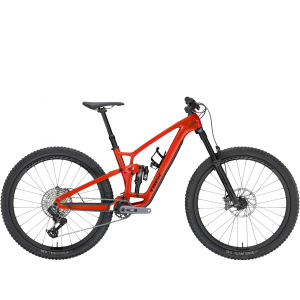
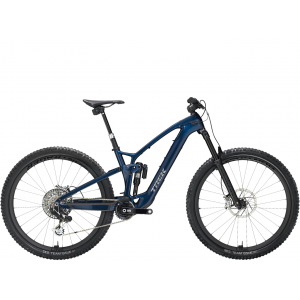
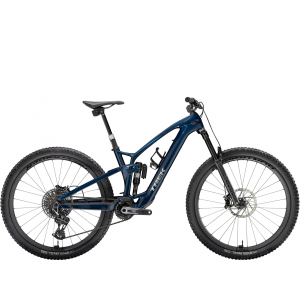
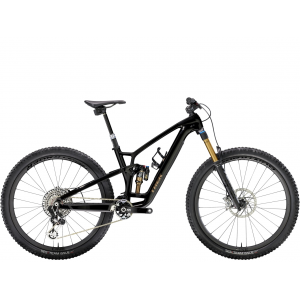
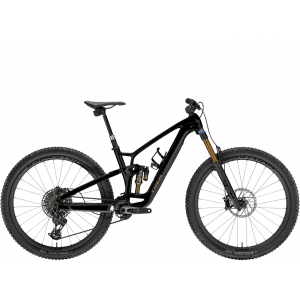


















0 comments
Post a reply to: Vital's SL eMTB Test Sessions - Trek Fuel EXe Review